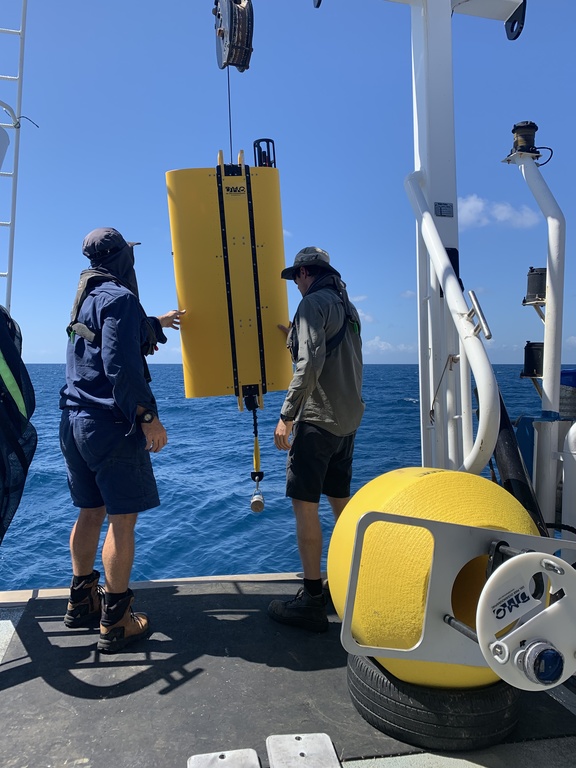The IMOS New Technology Proving Facility has a focus on increasing efficiency, effectiveness and expansiveness of current ocean observing platforms currently used by IMOS.
The first three successfully funded New Technology sub-Facilities are:
- Low cost wave buoy technology
- Wind speed and direction extension
- Profiling moorings evaluation
In the third of three news items introducing our new sub-Facilities we are looking at:
Profiling Moorings Evaluation
The Profiling Moorings Evaluation sub-Facility will trial the deployment of two different commercially available profiling mooring platforms (Mclane Prawler and Delmar Wirewalker) for a range of oceanographic environments and applications. The project seeks to determine the operational needs of these profiling systems and assess increases in sampling efficiencies and spatial resolution of data through the water column. The sub-Facility is led by Andrew Martini from CSIRO, in partnership with Craig Steinberg from the Australian Institute of Marine Science (AIMS).
During this assessment phase, the two profiling mooring systems will be co-located in a range of ocean environments to ensure reliability and longevity over long deployment periods.
The first deployment of the two systems was completed in March just south of Myrmidon Reef in Queensland by staff from AIMS and CSIRO. The moorings will remain at the site for two months to allow the systems to be tested in a tropical environment. Fortuitously the deployment captured the end of a marine heatwave that has resulted in the most widespread bleaching observed in the Great Barrier Reef. This tropical site will allow the project to assess how the systems function with higher levels of potential bio-fouling associated with warmer water.
Subsequent deployments will take place in Storm Bay, Tasmania; Two Rocks, Western Australia; and the Capricorn Channel, Queensland. Each of these deployments will test the systems for various aspects:
- Storm Bay: a temperate location, will test the systems over an increased deployment timeframe (four months) and a more hazardous location. Importantly, this site is similar to the conditions at the IMOS National Reference Stations at Maria Island, Port Hacking and Kangaroo Island.
- Two Rocks; the systems will be deployed at a depth of 500m for four months, this site will test the deeper profiling capabilities of both systems.
- Capricorn Channel: this final location will test the profiling systems in a high current environment.
Profiling moorings will provide gains in efficiency as there is a reduction in the number of sensors required in the mooring system as a single multi-sensor package moves up and down powered by surface waves and buoyancy or weight depending on the instrument type. Standard in-line moorings require multiple instruments at fixed points along the wire. The single sensor package used here reduce not only the initial and replacement capital costs for the instrumentation, but also instrumentation servicing, calibration and repair costs. Importantly, more frequent physical and biogeochemical variables can be monitored throughout the water column with the larger suite of sensors on a single instrument.
Expressions of Interest Process underway for a second round of projects
In its second year the IMOS New Technology Proving Facility will prioritise opportunities that can improve efficiency or effectiveness (in either equipment or software/data resources), fill existing gaps (e.g. biological observing), create impact and enhance our outputs. This includes the potential for products or software platforms that increase the uptake, use and applicability of existing IMOS data streams.
The Expressions of Interest process is currently underway with the next round of successful projects starting from the beginning of September 2020.
For more information.
